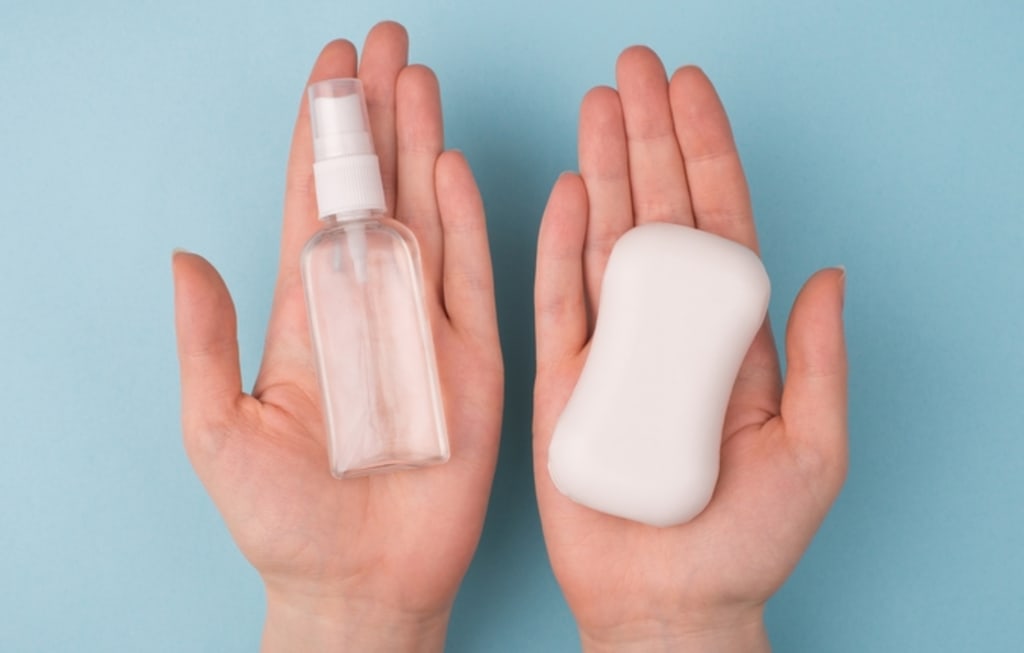Which is better: Soap or hand sanitizer?
Comparing Hand Hygiene: Soap vs. Hand Sanitizer

In the battle against viral infections, particularly amid the COVID-19 pandemic, hand hygiene has emerged as a critical line of defense. With countless myths and misconceptions surrounding the efficacy of different hand-cleansing methods, it's essential to delve into the science behind two primary options: soap and water versus hand sanitizer. By understanding how these agents interact with viruses at a molecular level and considering practical factors such as accessibility and global health disparities, we can make informed choices to protect ourselves and others.
The Molecular Battle: Soap vs. Viruses
At the heart of the effectiveness of soap lies its ability to disrupt the lipid bilayer—a protective outer shell common to many viruses, including the one causing COVID-19. This lipid bilayer consists of pin-shaped molecules called lipids, with heads attracted to water and tails repelled by it. In water-rich environments, these lipids form a shell held together by the hydrophobic effect, providing a platform for viral entry into host cells.
Soap, armed with amphiphilic molecules resembling biological lipids, capitalizes on this vulnerability. These soap molecules, repelled by water akin to the virus's lipid tails, compete for space within the viral shell. By disrupting the regularity of the membrane, soap destabilizes the virus's structure, leading to its disintegration. This mechanism not only neutralizes the virus but also encapsulates its components within soap bubbles, facilitating their removal upon rinsing with water.
Hand Sanitizer: A Swift Strike Against Viral Stability
In contrast to the molecular dismantling executed by soap, hand sanitizer employs a different strategy to combat viruses. With high concentrations of alcohol—commonly ethanol or isopropanol—hand sanitizer targets the stability of the virus's lipid bilayer. The hydrophobic effect, which gives the membrane its strength, is disrupted in the presence of alcohol, leading to its collapse. As a result, the virus's spike proteins, essential for infecting host cells, crumble, rendering it inert.
While hand sanitizer lacks the meticulous cleaning action of soap and water, it offers a convenient alternative, especially in situations where access to sinks is limited. However, thorough application is crucial to ensure comprehensive coverage and maximize effectiveness.
Practical Considerations: Accessibility and Global Health
Despite the efficacy of both soap and hand sanitizer in combating viral transmission, practical considerations play a significant role in determining their accessibility and impact. In regions where clean water is scarce, soap and water may not always be readily available, posing challenges to maintaining proper hand hygiene. In such contexts, innovations like portable water chlorination devices offer promising solutions, bridging the gap for vulnerable communities.
Furthermore, global health disparities underscore the need for equitable access to hygiene resources, particularly during outbreaks. While hand sanitizer serves as a practical option in certain situations, it's essential to address underlying issues of infrastructure and resource allocation to ensure universal access to essential hygiene products.
Expert Guidance: Navigating Hand Hygiene Practices
In navigating the complexities of hand hygiene, adherence to expert guidance remains paramount. While both soap and hand sanitizer are effective in killing viruses, the choice between them may depend on the nature of the viral outbreak and practical considerations such as accessibility and convenience. Ultimately, following accredited medical advice and adopting evidence-based practices is essential for protecting oneself and others from viral transmission.
Conclusion:
Hand hygiene stands as a cornerstone of infection prevention, particularly in the context of viral outbreaks like COVID-19. By understanding the molecular dynamics of soap and hand sanitizer in combating viruses and considering practical factors such as accessibility and global health disparities, we can make informed choices to safeguard public health. Whether it's through the meticulous cleansing action of soap and water or the swift strike of hand sanitizer, prioritizing hand hygiene is essential for combating viral transmission and promoting overall well-being.
About the Creator
ava
The future belongs to those who prepare for it today
Enjoyed the story? Support the Creator.
Subscribe for free to receive all their stories in your feed. You could also pledge your support or give them a one-off tip, letting them know you appreciate their work.






Comments (1)
Hey, just wanna let you know that this is more suitable to be posted in the FYI community 😊